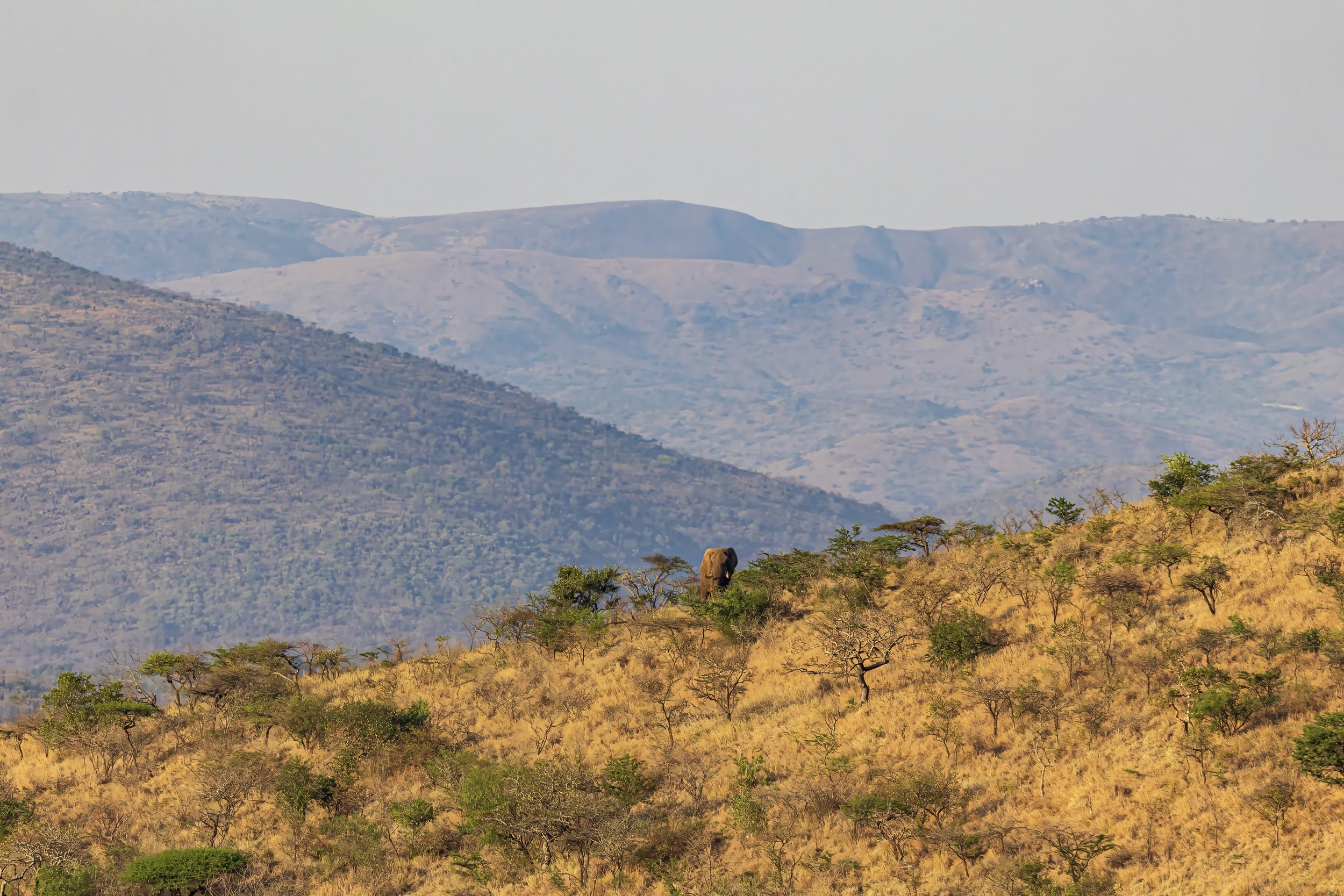The Majesty of African Elephants: Gentle Giants of the Wild
The African elephant is not just the largest land mammal on Earth; it’s a symbol of strength, wisdom, and deep social bonds. Photographing and monitoring these magnificent creatures in their natural habitat is both a privilege and a humbling experience. In this blog post, I’ll share insights into the African elephant, stories from my time with Wildlife ACT at Manyoni Private Game Reserve, and what makes these animals so extraordinary.
A Tale of Two Species
Africa is home to two species of elephants: the African savanna elephant (Loxodonta africana) and the African forest elephant (Loxodonta cyclotis). While the savanna elephant is found in the open landscapes of East and Southern Africa, the smaller forest elephant resides in the dense forests of Central and West Africa. Both play essential ecological roles, shaping their environments in ways that support biodiversity.
The Social Lives of Elephants
African elephants live in tight-knit herds led by a matriarch, the oldest and most experienced female. Their social structure is intricate, with strong familial bonds that drive their behavior. Observing elephants during my time at Manyoni, it was evident how deeply connected these animals are. They show signs of empathy, comfort each other, and even mourn lost members, demonstrating intelligence and emotional complexity.
Adaptations and Unique Features
One of the most captivating features of the African elephant is its ears, which function as natural cooling systems. Flapping these large ears helps regulate body temperature by cooling the blood that flows through them. Their trunks, made up of over 40,000 muscles, serve countless purposes from communication to foraging, and their tusks are tools for digging and defense.
These adaptations are not only practical but also symbols of their power. Sadly, their tusks make them prime targets for poachers, contributing significantly to their endangered status.
Monitoring Elephants at Manyoni Private Game Reserve
One of my most unforgettable experiences was monitoring elephants at Manyoni Private Game Reserve with Wildlife ACT. Using telemetry equipment, we tracked and located an elephant herd foraging along the side of a mountain. The moment was surreal; the lush terrain, the quiet rustle of the leaves, and the distant rumble of the herd’s movement created an atmosphere of pure wonder.
While observing, I spotted EM1, the dominant male elephant. He walked majestically along the ridgeline, his massive frame silhouetted against the backdrop of rolling mountains. As he paused and turned to face us, the scene seemed almost unreal—a moment suspended in time. Capturing this moment with my camera was a highlight of my photography journey, an image that speaks to both the grandeur of the landscape and the powerful presence of the elephants that roam it.
Monitoring these gentle giants was more than just an exercise in observation; it was a reminder of why conservation is vital. Tracking their movements and understanding their behavior contributes to the larger mission of protecting them from the ongoing threats they face, from poaching to habitat loss.
Conservation Challenges and Hope
Despite their immense size and strength, African elephants are vulnerable. Poaching for ivory and human-wildlife conflict are significant threats to their survival. Conservation efforts like those at Manyoni, involving close monitoring, anti-poaching initiatives, and community engagement, are critical to ensuring that elephants continue to thrive in their natural habitats.
Every encounter, whether behind the camera or through the lens of conservation work, reinforces the importance of protecting these extraordinary animals for future generations.
Closing Thoughts
The African elephant embodies the beauty and complexity of the natural world. Observing them up close, particularly while monitoring them in a place like Manyoni, is a powerful experience that deepens your appreciation for wildlife and the urgent need for its conservation. Through photography and conservation stories, I hope to share not just their majesty but also the importance of safeguarding their future.


